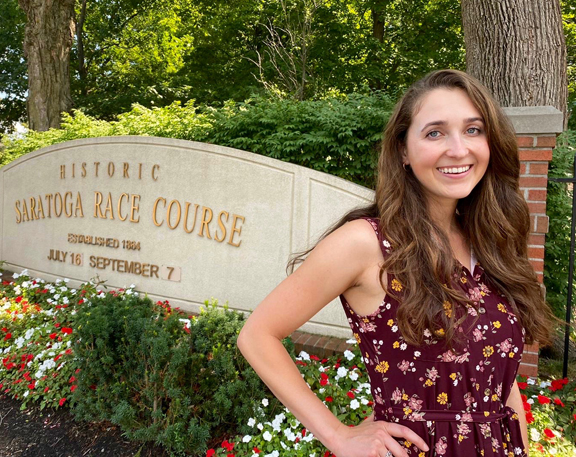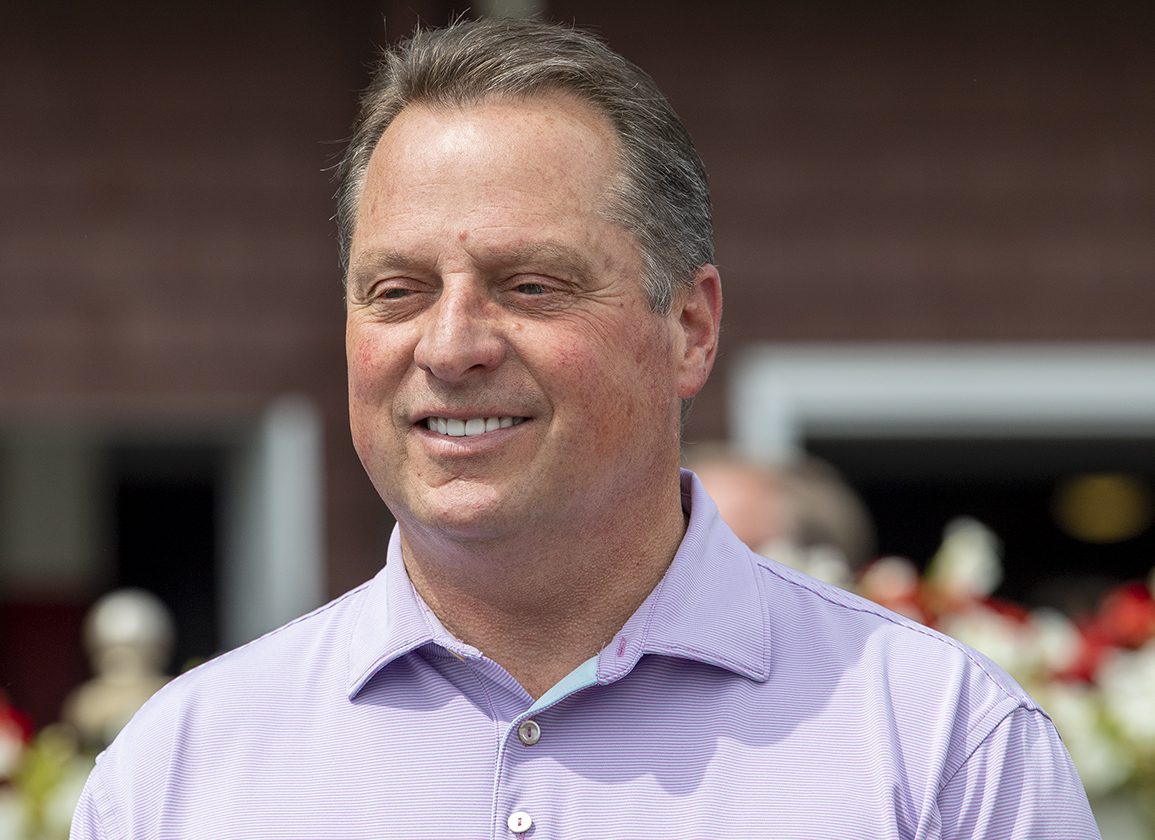How did we get hooked on this sport? We all have stories about how our love affair developed and blossomed. The TDN will be reaching out to numerous notable people in the industry to get their stories to find out how they got hooked and stayed hooked on the sport.
Annise Montplaisir, Executive Director, Amplify
I became hooked on racing when I was 12 years old, after watching the 2007 movie “Ruffian.” I already loved horses and was avidly involved in the 4-H horse project, but growing up on the ND/MN border, I had had almost no exposure to racing before seeing that movie. I was fascinated by Ruffian's racing career, the story of the people around her, and her drive to win. I became obsessed with reading racing books, and told my parents I was going to work in the Thoroughbred industry someday.
That conviction was solidified when just a few months later, my mom planned a surprise 13th birthday party for me at the North Dakota Horse Park, the small racetrack near my childhood home. The track executive director at the time made me feel so special. She took my friends, my mom, and me to the starting gate for the beginning of a race, gave us a tour of the stable area, and introduced us to the track's mascot, an OTTB named Barracuda Boy. These were such simple things, but they made me feel part of something big and important.
The final race of the day was for $5,000 claimers for a purse of $2,800. The skies darkened and it started pouring rain, which somehow added to my excitement. I insisted on standing in the rain right at the finish line with my friends, and we went berserk cheering for two geldings, Dr Ty and Fargo Time, as they battled down the stretch to a photo finish. It might as well have been the Kentucky Derby, we were so thrilled.
Who would have ever thought that years down the road, my entire career would be devoted to introducing youth to the Thoroughbred industry. I'd say that 13-year-old me would think that's pretty cool.
Tom Amoss, trainer & T.V. commentator
I went to the same school as Al Stall Jr., whose father was the chairman of the Louisiana Racing commission. We went to Isidore Newman, which is where the Manning brothers all went. We both graduated from there and we roomed together our freshman year at LSU. I became fast friends with Al and one of his interests was handicapping the races. I remember one day he asked me if I wanted to go to the track with his dad. I went on a whim and I liked it.
At the time, my oldest brother was a reporter for the paper here in New Orleans and he connected me with one of the sports writers who really understood racing. That guy brought me to the track at the Fair Grounds and really started to teach me what to look for and what to see when you're handicapping. I fell in love with handicapping from that time on. The idea of having this puzzle in front of you and how it's going to play out and then doing it and being right. You couldn't beat that. I really enjoyed that a lot. It was to the point where I was getting home from school and I got off the street car one stop after the stop for my house. That was because at that stop they had a newsstand that sold the Racing Form. I would get that day's Form even though the races were two-thirds over. I'd bring it back to the house. My parents would say you have to do your homework before dinner. I didn't do any homework. I just pulled out the Form and started handicapping the races.
Racing was so popular in New Orleans in the '70s that when the nightly news came on they would go over the results at the Fair Grounds. I had already done my handicapping and I could see how I did against the actual results. I started reading some books about handicapping. By the time I was in ninth grade, I was fluent when it came to reading the Form and I really enjoyed doing it.
It was about that time and I was spending the night at Al's house and he said his dad had some horses and they were going to go out and watch them train. He said it was an early morning, but asked if I wanted to come out with them. I said sure. At that point, I just thought they put these horses in the gate and the fastest one won. When I was introduced to the backside that day, it was like taking your favorite Broadway play, which for me is “Phantom of the Opera,” and then getting to go back stage to see how it all worked. When I had that visit to the track, not only was I amazed at the details but it was then that I decided what I wanted to do. During summer breaks from college I worked alongside with Al at the track in Shreveport.
I got my degree in business, but never had so much as one interview. I went straight to the racetrack. I called it my graduate school. I wanted to learn and do different jobs to feel comfortable with how everything worked. When I went out on my own in 1987, I knew I could train any horse. To be a good horse trainer, you need to be real confident to the point of maybe being arrogant when it came to your abilities. That's when I started and when I did, it was me versus the world. I was breaking into a business that was closed off to a lot of people and there was a lot of nepotism. I was definitely the outsider. Nobody in my family knew anything about racing. Fortunately I got a few lucky breaks and I started rolling.
Not a subscriber? Click here to sign up for the daily PDF or alerts.







